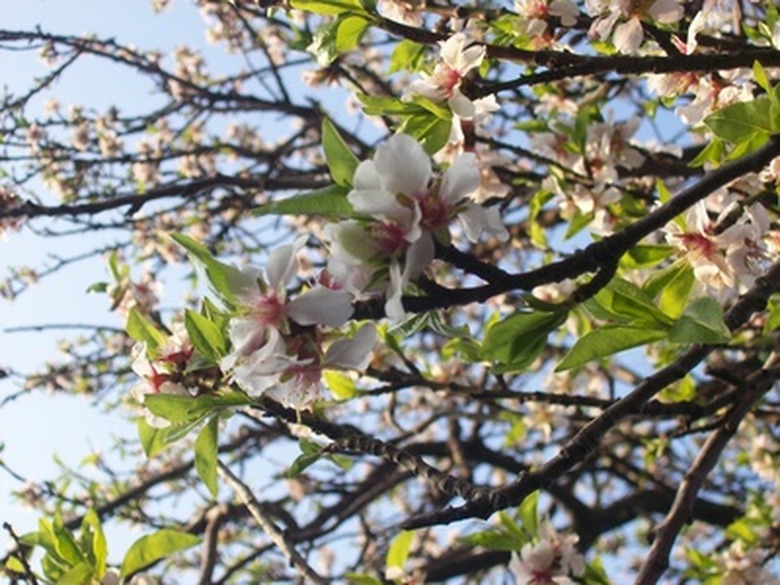Flowering Almond Diseases
Widely planted as landscape specimens for their spectacular spring blossoms, flowering almonds (Prunus glandulosa) are fairly susceptible to several common diseases of deciduous trees and shrubs. The best defense is to plant resistant varieties and to ensure that any trees you purchase are disease-free by buying from reputable nurseries.
Dieback/Canker
Affecting a wide variety of plants and trees, canker is a fungal disease that can kill a severely infected plant or tree. It appears as black splotches that sometimes girdle the twigs and branches. The disease progresses and forms whitish raised bumps on otherwise healthy bark, while the fungus eats away and destroys the bark in its advanced stages. Prune off affected parts as soon as symptoms appear. Cover pruning cuts with protective pruning spray to prevent the spores from entering the plant.
- Widely planted as landscape specimens for their spectacular spring blossoms, flowering almonds (Prunus glandulosa) are fairly susceptible to several common diseases of deciduous trees and shrubs.
- Cover pruning cuts with protective pruning spray to prevent the spores from entering the plant.
Verticillium Wilt
Affecting many species of trees and shrubs as well as herbaceous perennials and annuals, verticillium wilt is a soil-borne fungus that can remain dormant in the soil for several years. It infects plants and trees through their roots, and symptoms above ground occur long after the entire plant's vascular system is infected. Although some plants and trees recover, there is no cure for verticillium wilt. The best defense is to plant resistant varieties and practice good cultivation so that your flowering almond stays healthy.
Armillaria Root Rot
Armillaria root rot is a catch-all for many root rot diseases of woody plants and trees. Initially the tree will begin changing color and dropping its leaves extra early in autumn. New growth appears stunted while the foliage turns yellow or brown. Main stems and branches die back and the flowering almond will appear to be in declining health. A severely infected tree will often exude a resinous gum or watery liquid from the trunk near the ground. Mushrooms will encircle the trunk in the final stages of disease. There is no cure, and infected flowering almond trees will eventually die.
- Affecting many species of trees and shrubs as well as herbaceous perennials and annuals, verticillium wilt is a soil-borne fungus that can remain dormant in the soil for several years.
- Main stems and branches die back and the flowering almond will appear to be in declining health.
